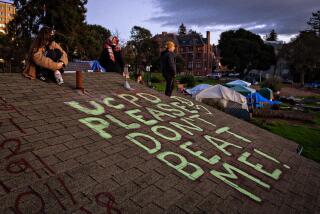TV REVIEW : ‘Central Park’ Reveals What Makes New York Tick
- Share via
The second thing visitors to New York are likely to do after staring up at the skyscrapers is ask, “How can people live here?” The usual answer--”It’s so exciting”--isn’t the true answer.
The true answer is still a rather well-kept secret: New York, and only New York, has Central Park. In what seems like an utterly eccentric subject choice for him, master documentarian Frederick Wiseman has blurted out the secret with his latest film, titled, naturally, “Central Park” (tonight at 8 p.m., Channels 28 and 15).
Environments ruled by stress, such as nuclear missile silos, intensive care wards or police stations, have always been Wiseman’s milieu, his field of cinematic battle with the human element. The genius behind Central Park is its simple and elegant purpose, as a stress reducer, a bit of nature in an urban jungle. Naturalists might add that the 840-acre park also serves as a convenient way station for migrating animals.
But Wiseman’s subject is always how social units operate. His film, made a year before the April 1989 “wilding” incident, is a fine medium for understanding New York itself, how it needs the park and how the park means different things to different people.
It is a lab for bird-watchers, gardeners and dinosaur lovers (the cameras capture a kooky celebration of the extinct giants). It is a public commons for ideas (peace activists spar with the park bureaucracy) and exiles (a watermelon-laden picnic for New Yorkers who hail from Mississippi) and artists (Francis Coppola filming “New York Stories,” Luciano Pavarotti in recital, Midnight Oil rocking at an anti-nuke rally). It is a huge repository for every imaginable sport: Wiseman peruses over remote-control boat racing, lawn bowling, tai chi, marathon races, cross-country skiing and acres full of tennis players.
“Central Park” also looks at the hidden Central Park, such as the cops, the grounds-keeping crews and the busy park administration that is constantly meeting, scrambling for funds and proud of the “turnaround” that’s occurred since 1980.
More to Read
The complete guide to home viewing
Get Screen Gab for everything about the TV shows and streaming movies everyone’s talking about.
You may occasionally receive promotional content from the Los Angeles Times.






